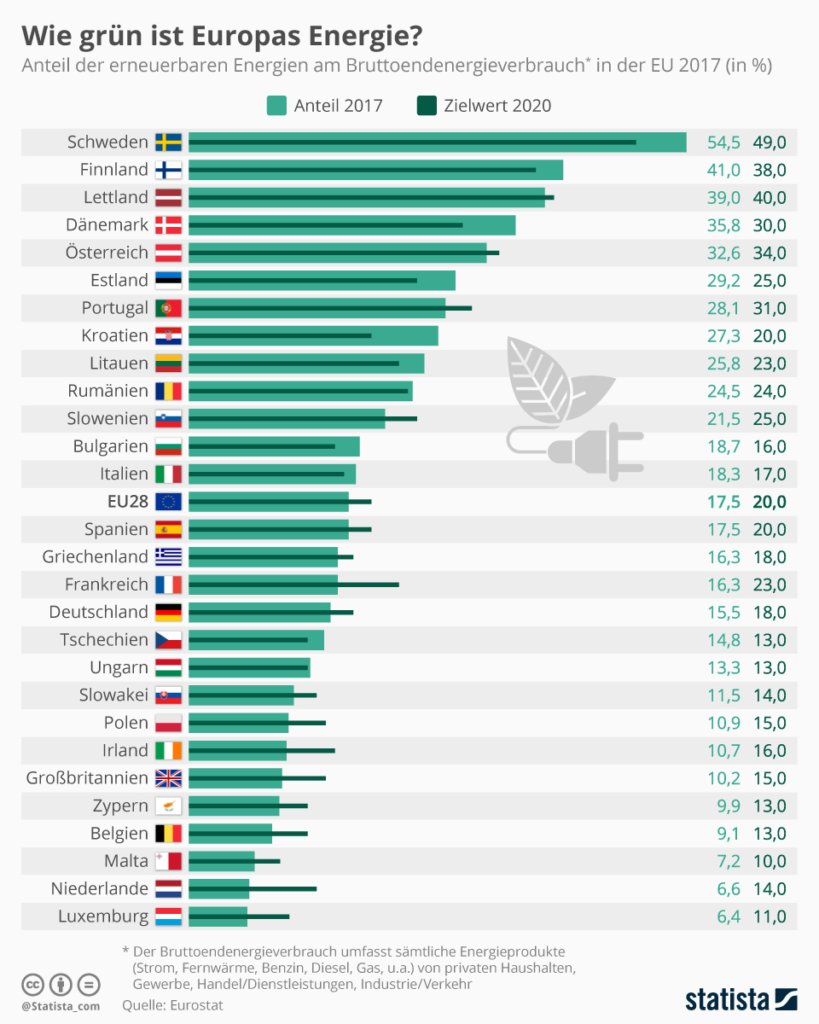How green is Europe's energy? – How green is Europe's energy?
Language selection 📢
Published on: July 24, 2019 / Update from: August 7, 2021 - Author: Konrad Wolfenstein
It is a project for climate protection: by 2020, the European Union (EU) wants 20 percent of gross final energy consumption from alternative energy sources such as wind and sun. The EU member states have set themselves individual goals for this. According to the latest Eurostat data , which refers to 2017, only very few countries have so far achieved their climate target.
Sweden, the most ambitious country when it comes to expanding renewable energies, already exceeded its target of 49 percent in 2017 and is currently at the top of the EU ranking with a share of 54.5 percent. In Finland, renewable energies account for 41 percent of gross final energy consumption - meaning the country has already exceeded its targets.
Other countries such as France and the Netherlands are lagging far behind despite setting low targets, as the graphic shows. With a share of 15.5 percent renewable energy, Germany is below the EU average. Some federal states in Germany want to push the EU goals by making . This also includes a solar requirement for solar carports in open parking areas .
Things are looking better in Austria, however: In 2017, the Alpine republic already obtained 32.6 percent of its energy from renewable sources and is well on its way to achieving its goals by 2020.
A country's gross final energy consumption includes all energy products such as electricity, district heating, gas and fuels that are purchased by private households, businesses, trade and services, industry and transport.
It is a project for climate protection: By 2020, the European Union (EU) wants to feed 20 percent of gross final energy consumption from alternative energy sources such as wind and sun. The EU member states have set themselves individual targets for this. According to the latest Eurostat data , which refer to the year 2017, only very few countries have reached their climate target.
Sweden, the most ambitious country in the expansion of renewable energies, has already exceeded its target of 49 percent in 2017 and is currently at the top of the EU ranking with a share of 54.5 percent. In Finland, renewable energies account for 41 percent of gross final energy consumption, which means that the country has already exceeded its targets.
Other countries such as France and the Netherlands are lagging far behind despite their low targets, as the chart shows. With a share of 15.5 percent renewable energies, Germany is below the EU average. On the other hand, things look better in Austria: In 2017, the Alpine Republic already received 32.6 percent of its energy from renewable sources and is well on the way to achieving its targets by 2020.
A country's gross final energy consumption includes all energy products such as electricity, district heating, gas and fuels purchased from private households, commerce, trade and services, industry and transport.



























